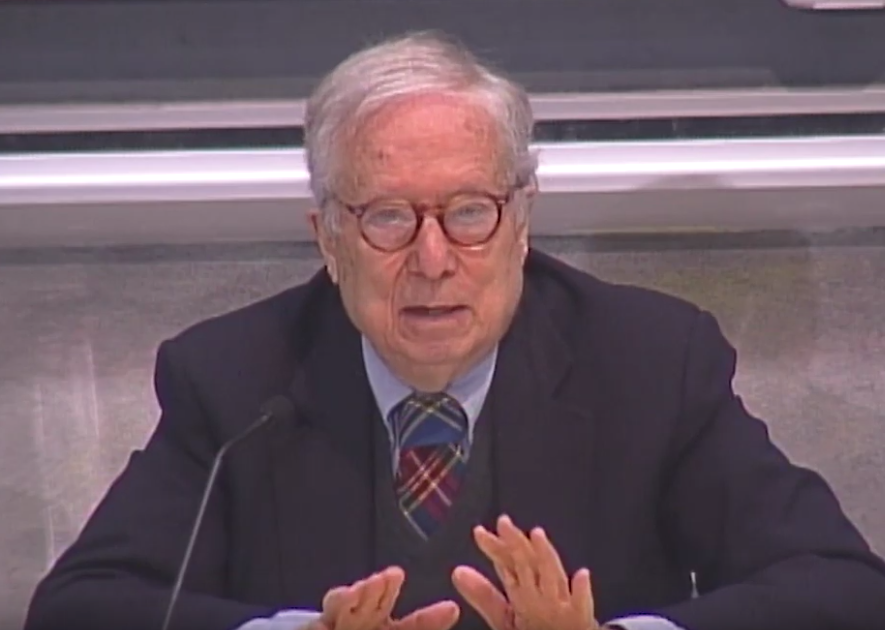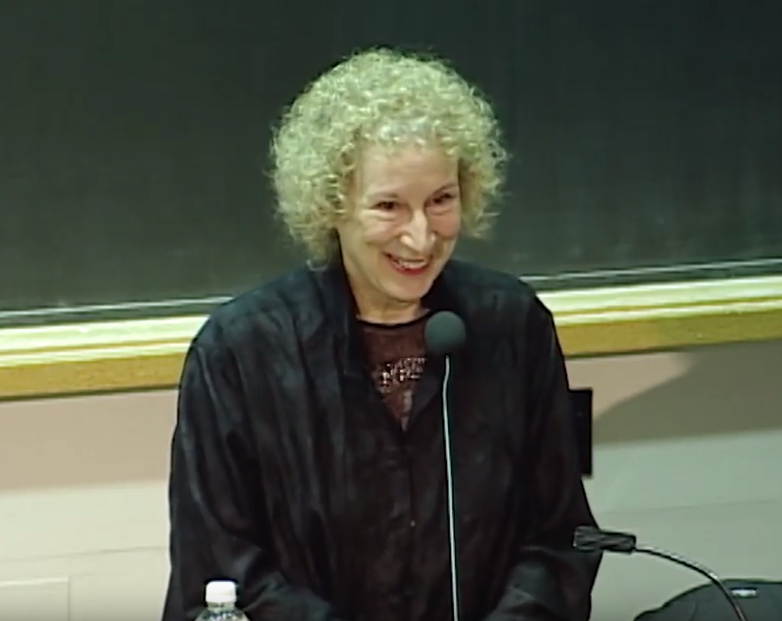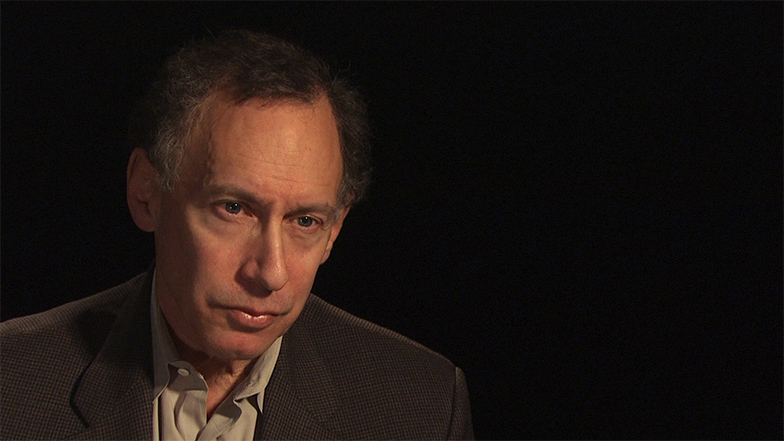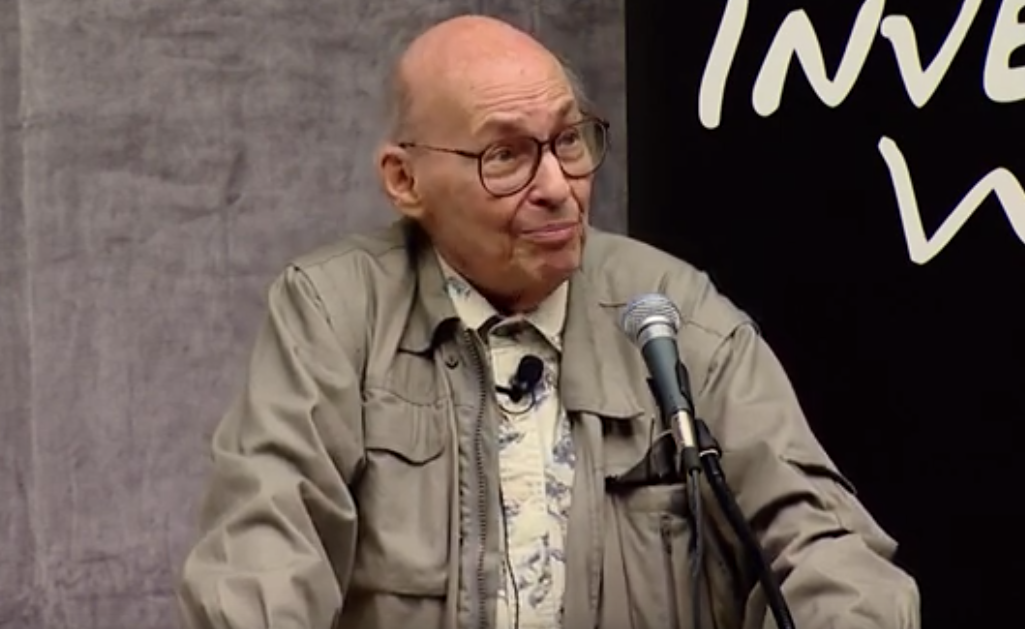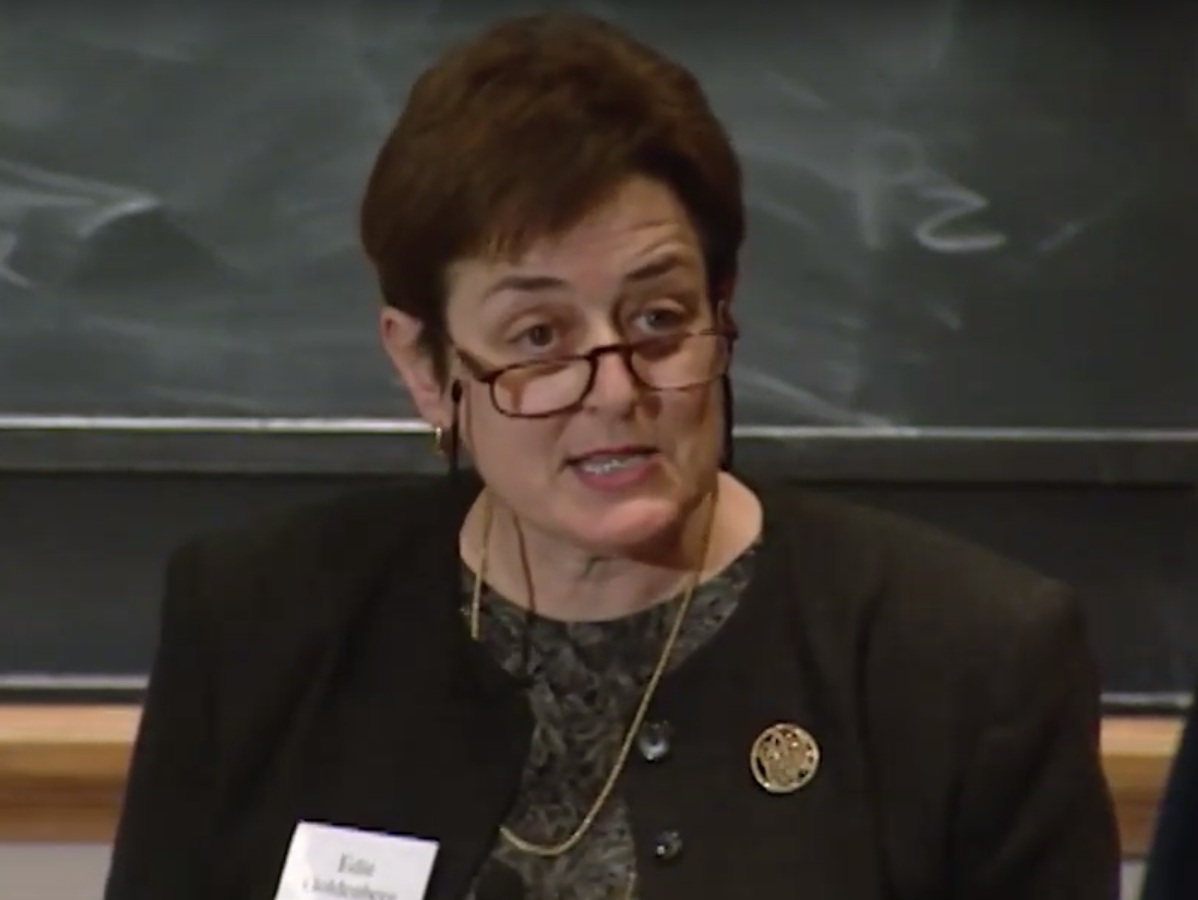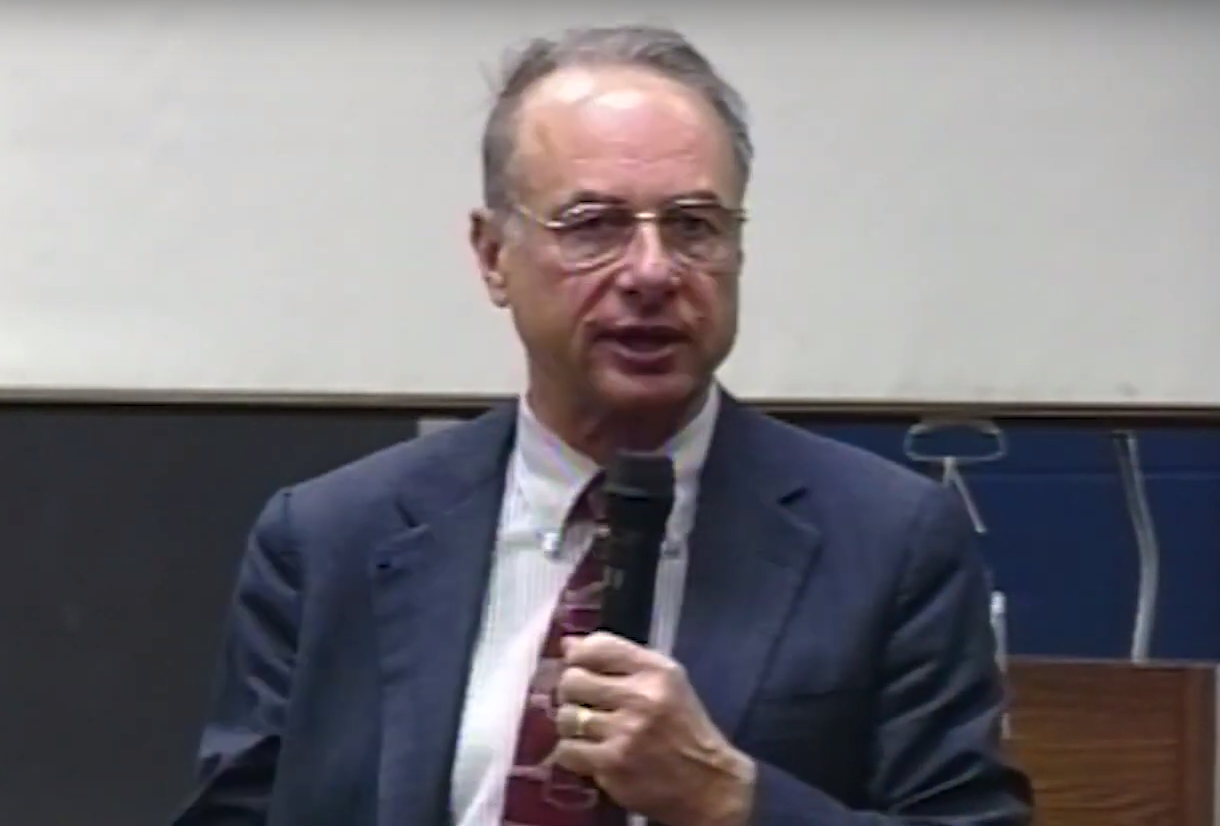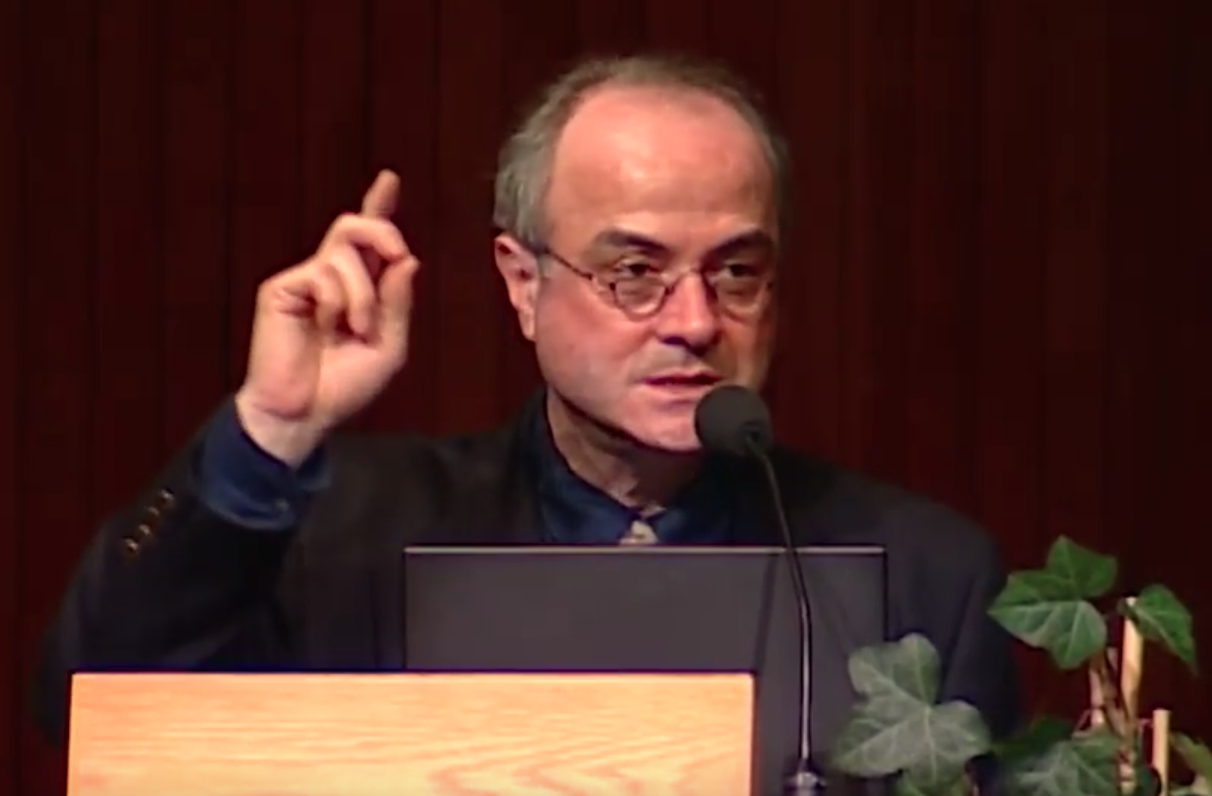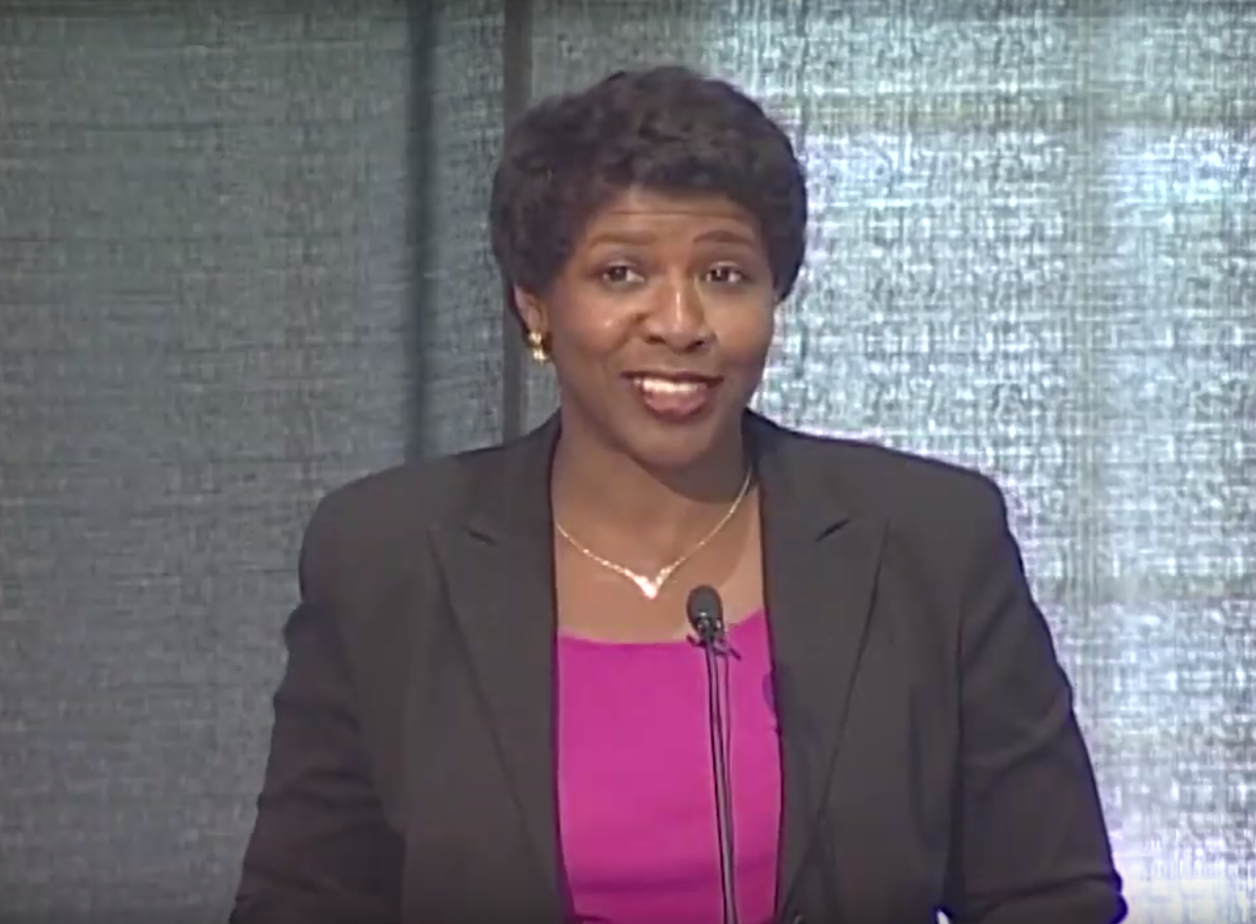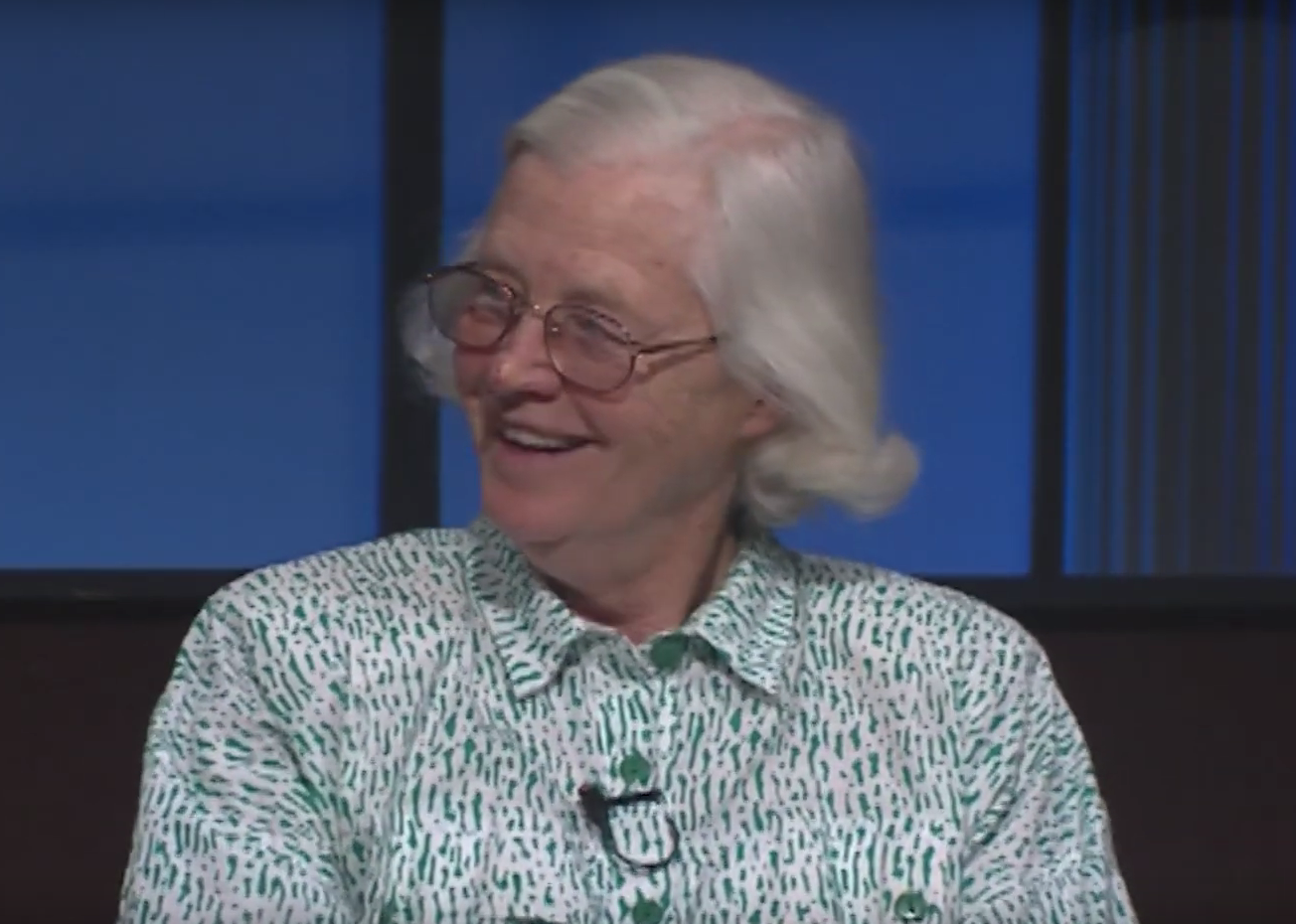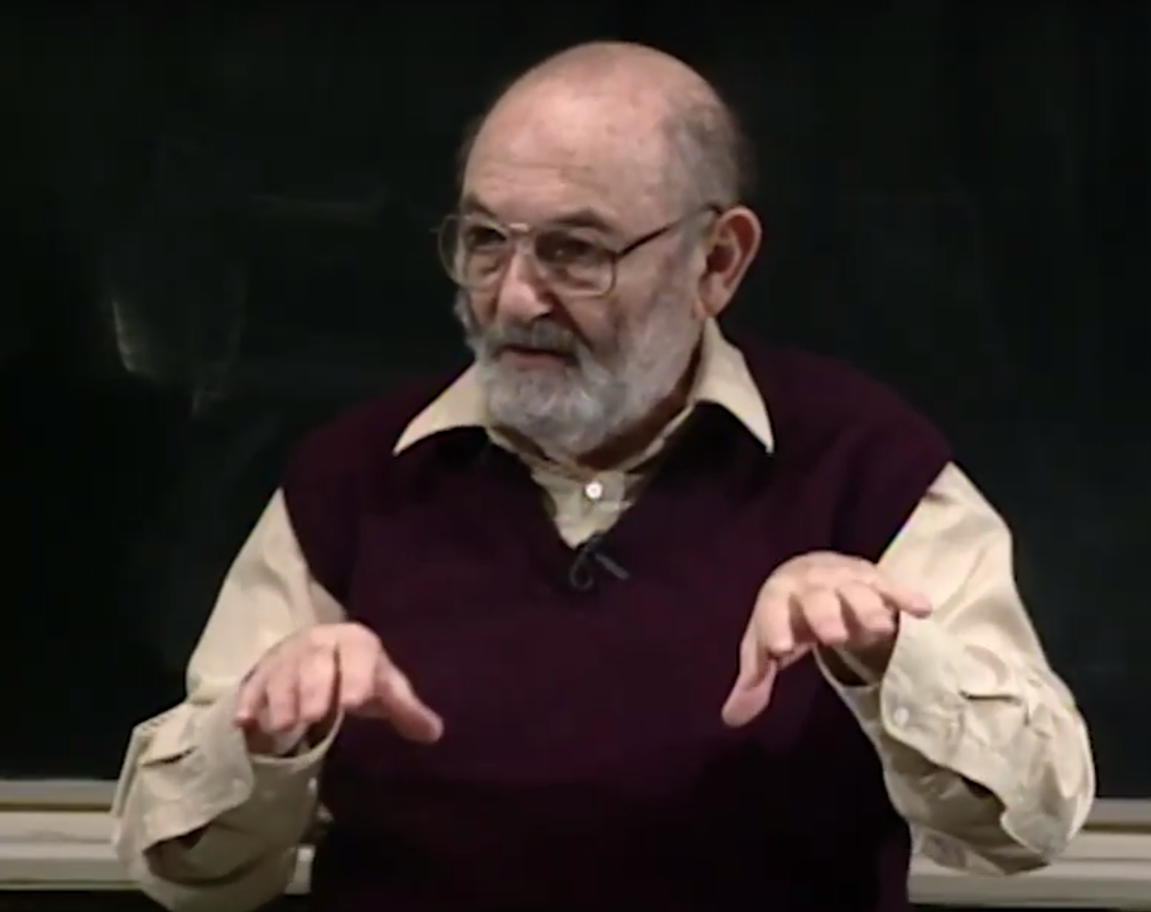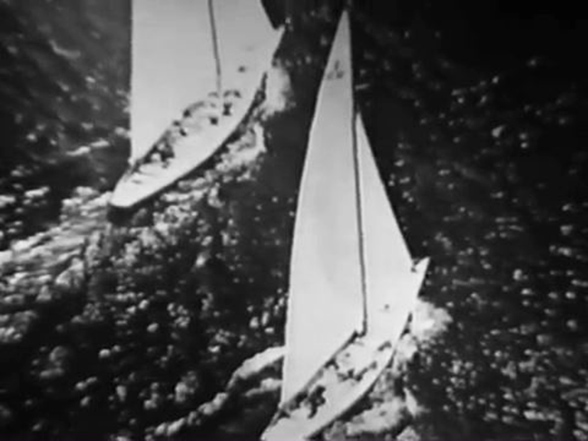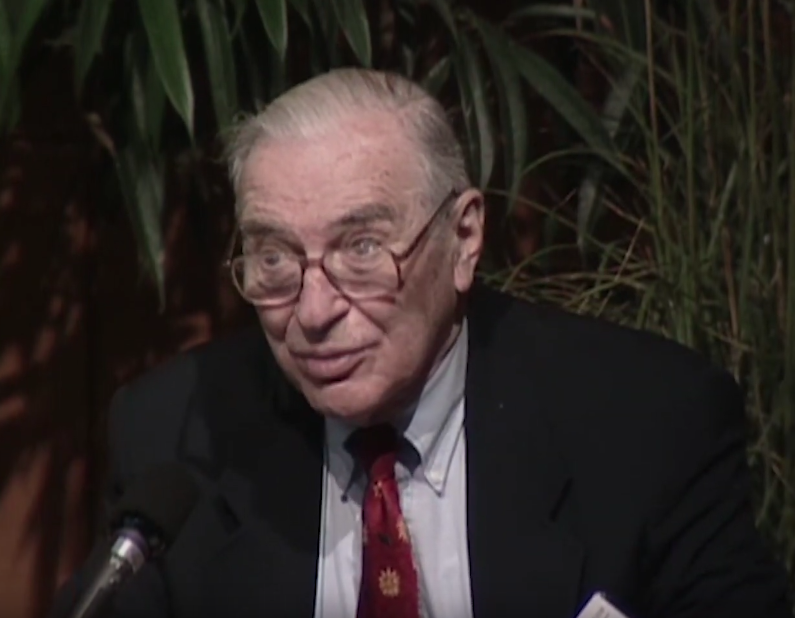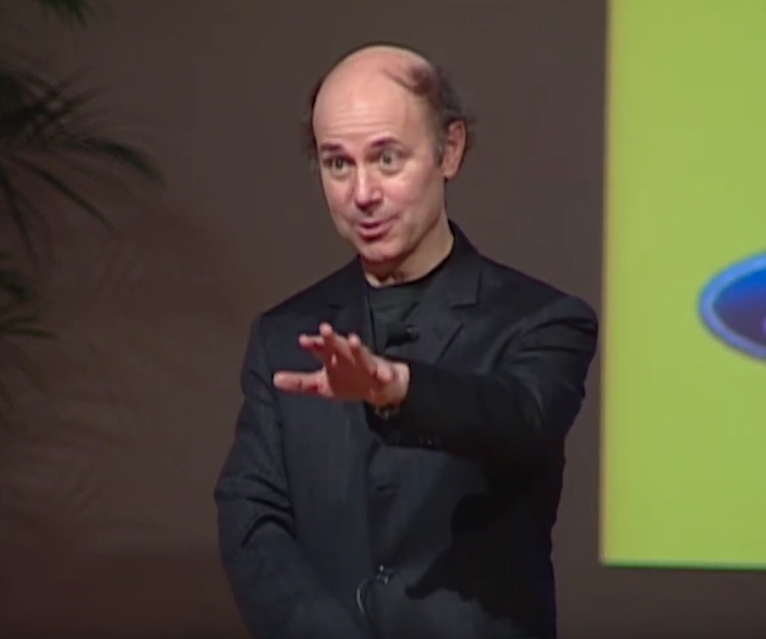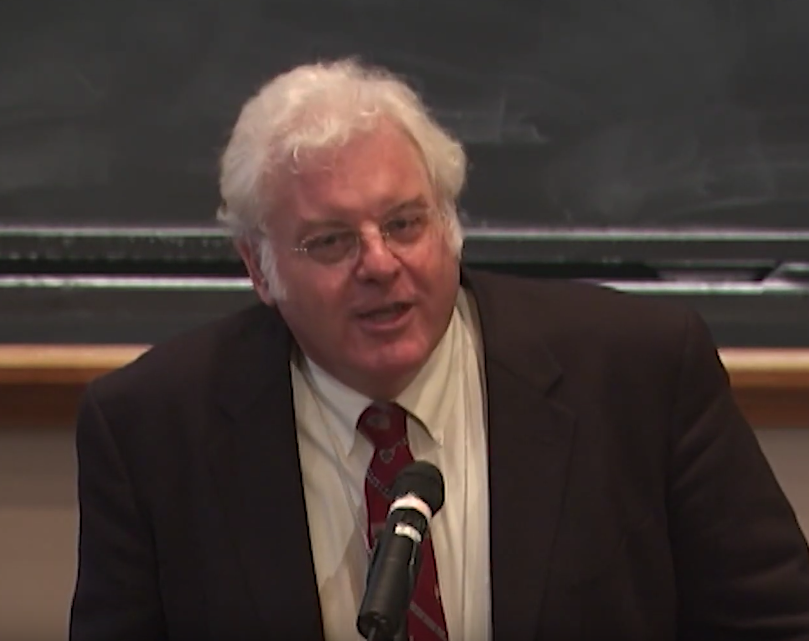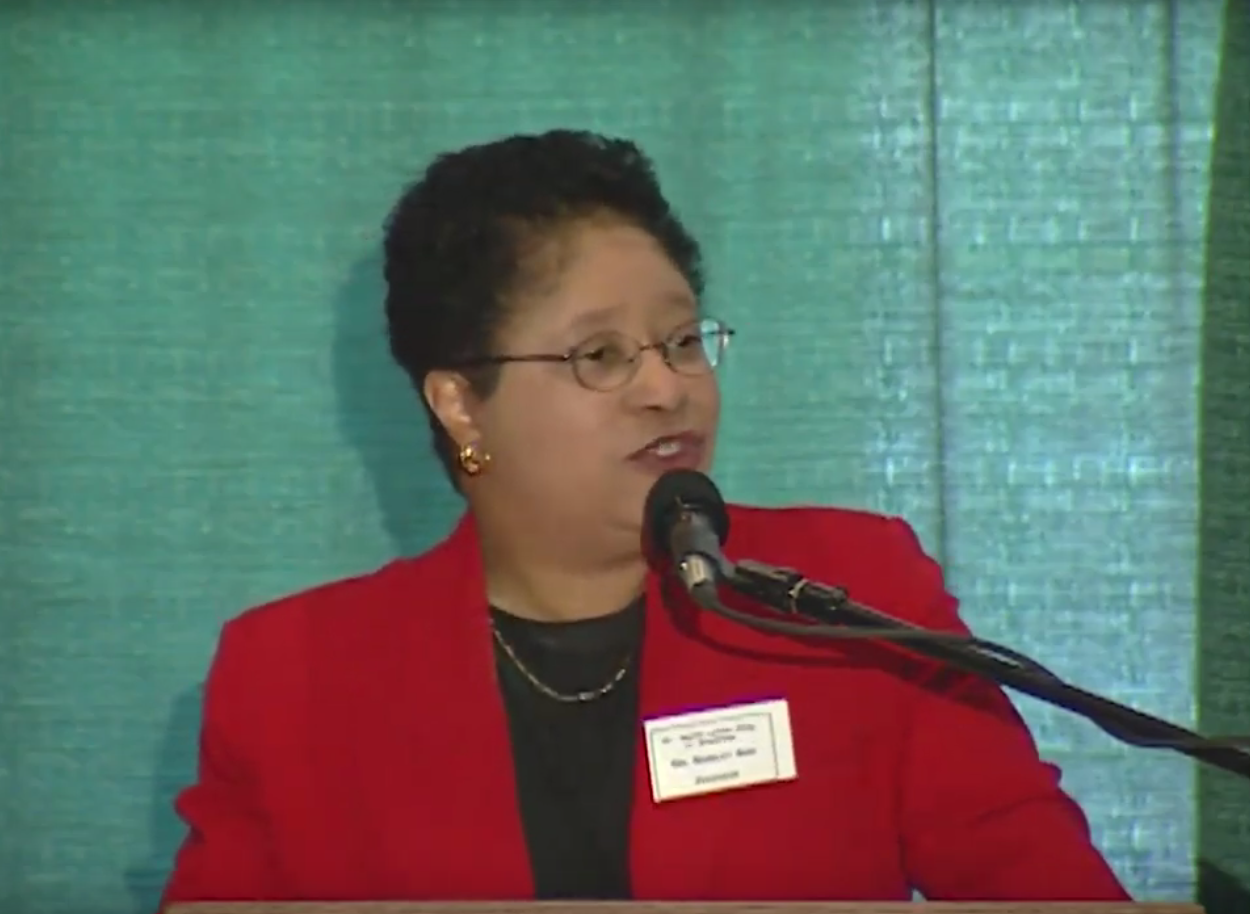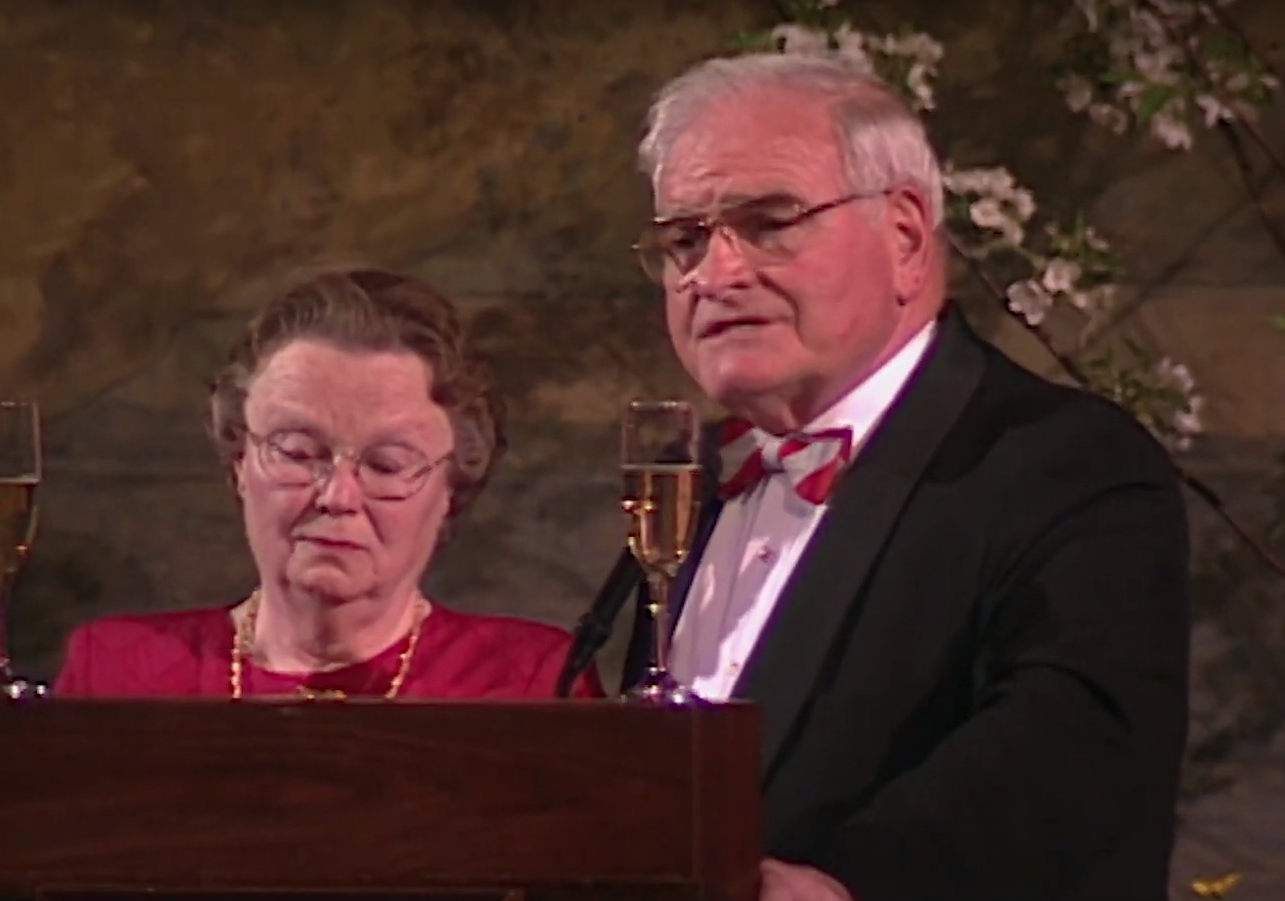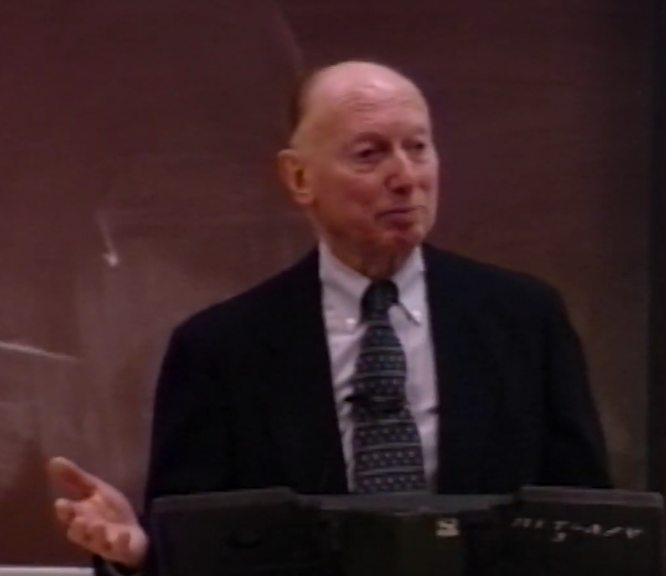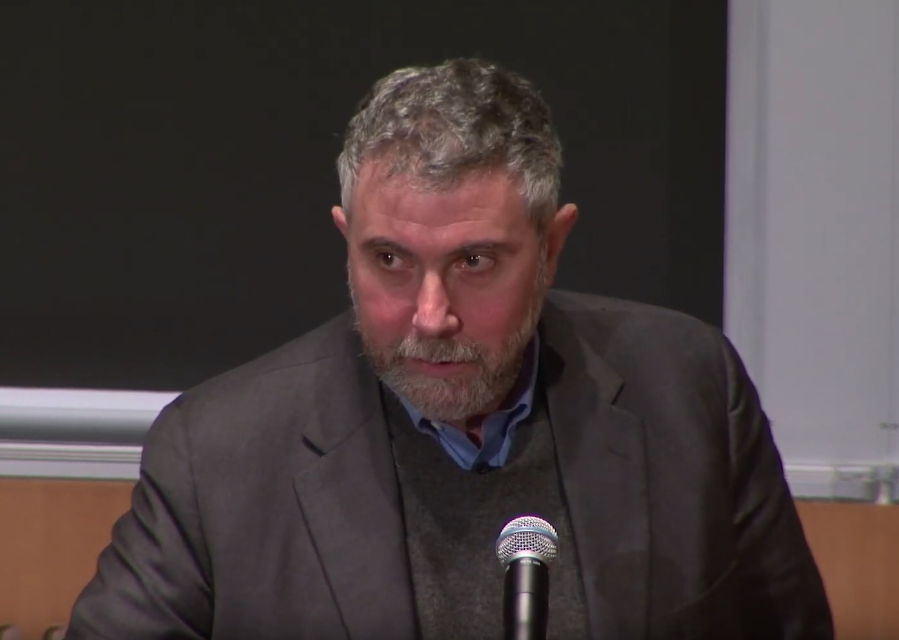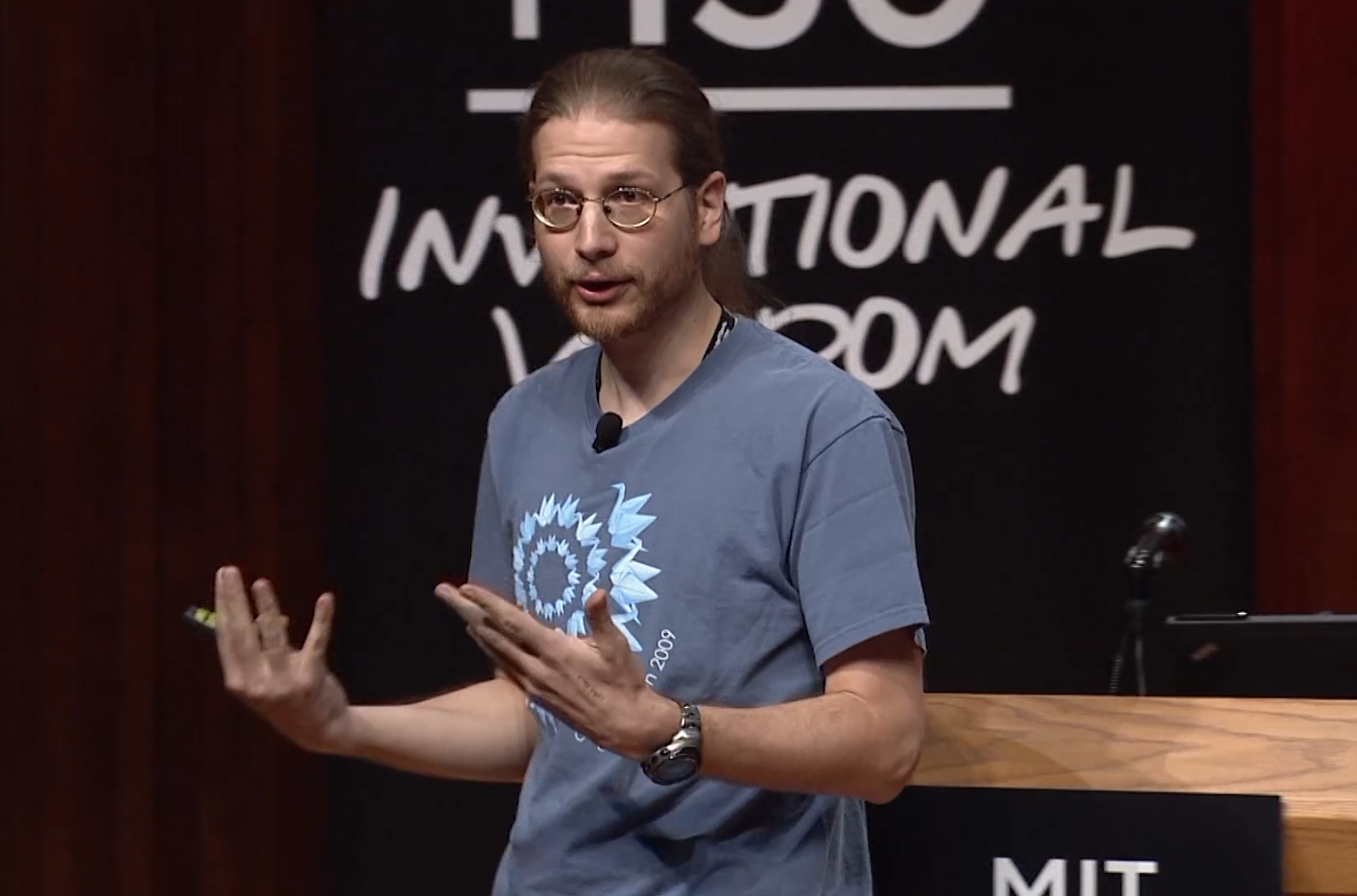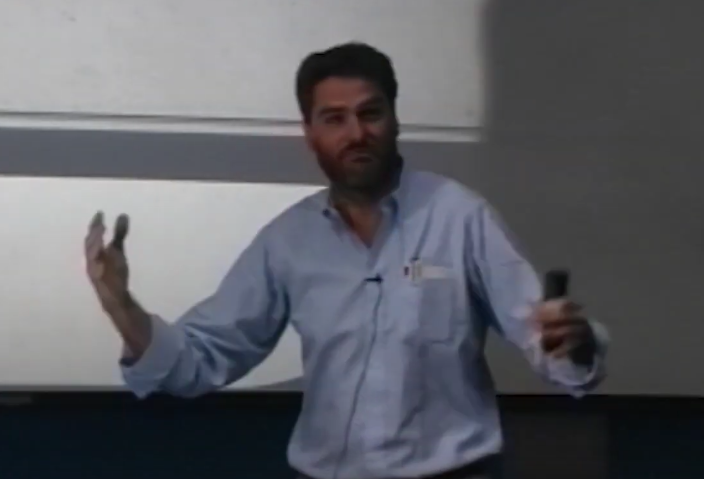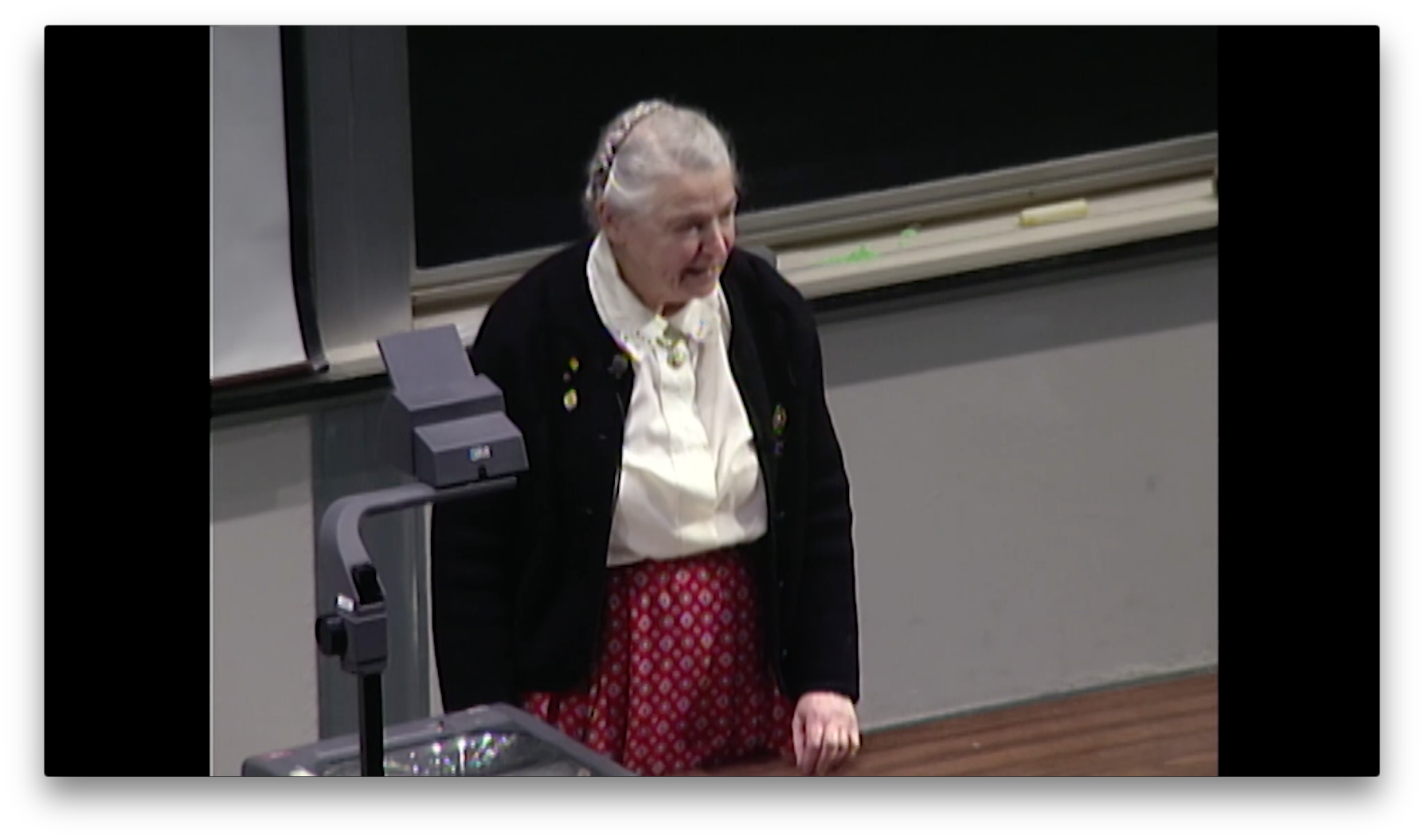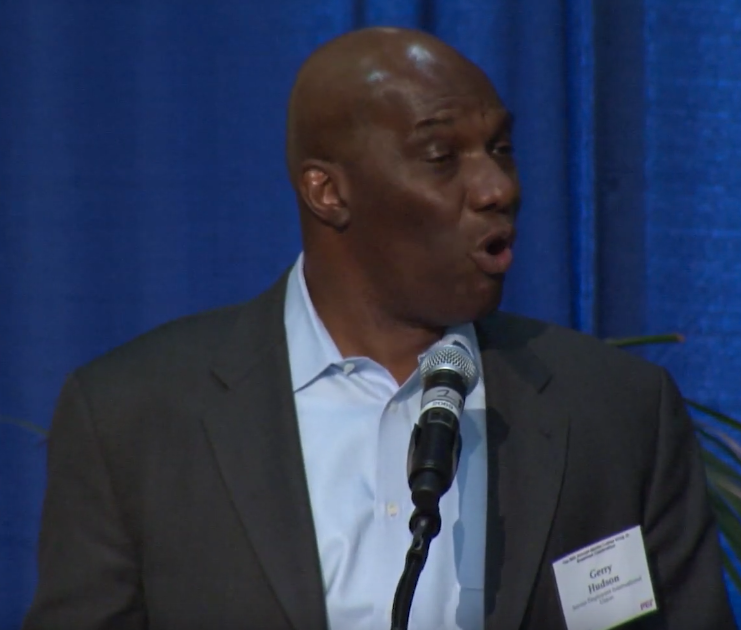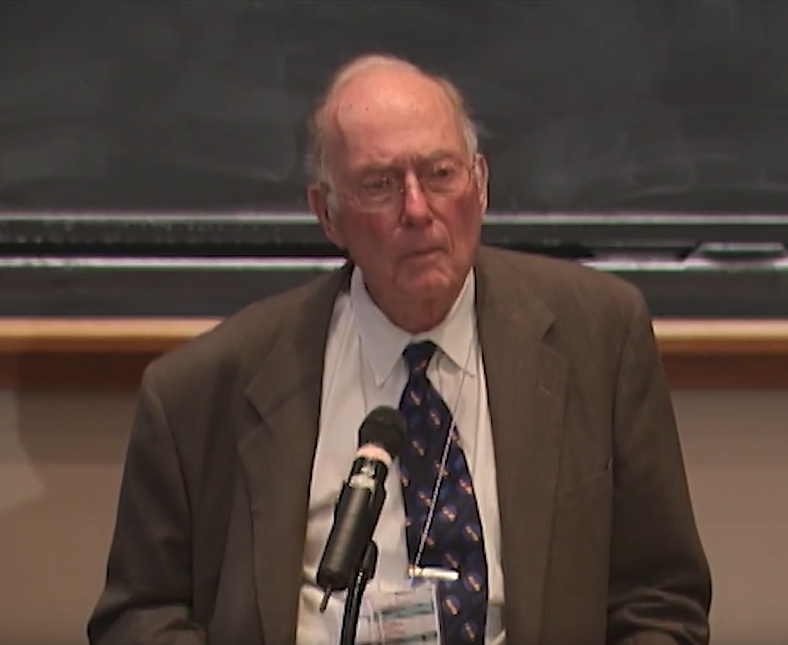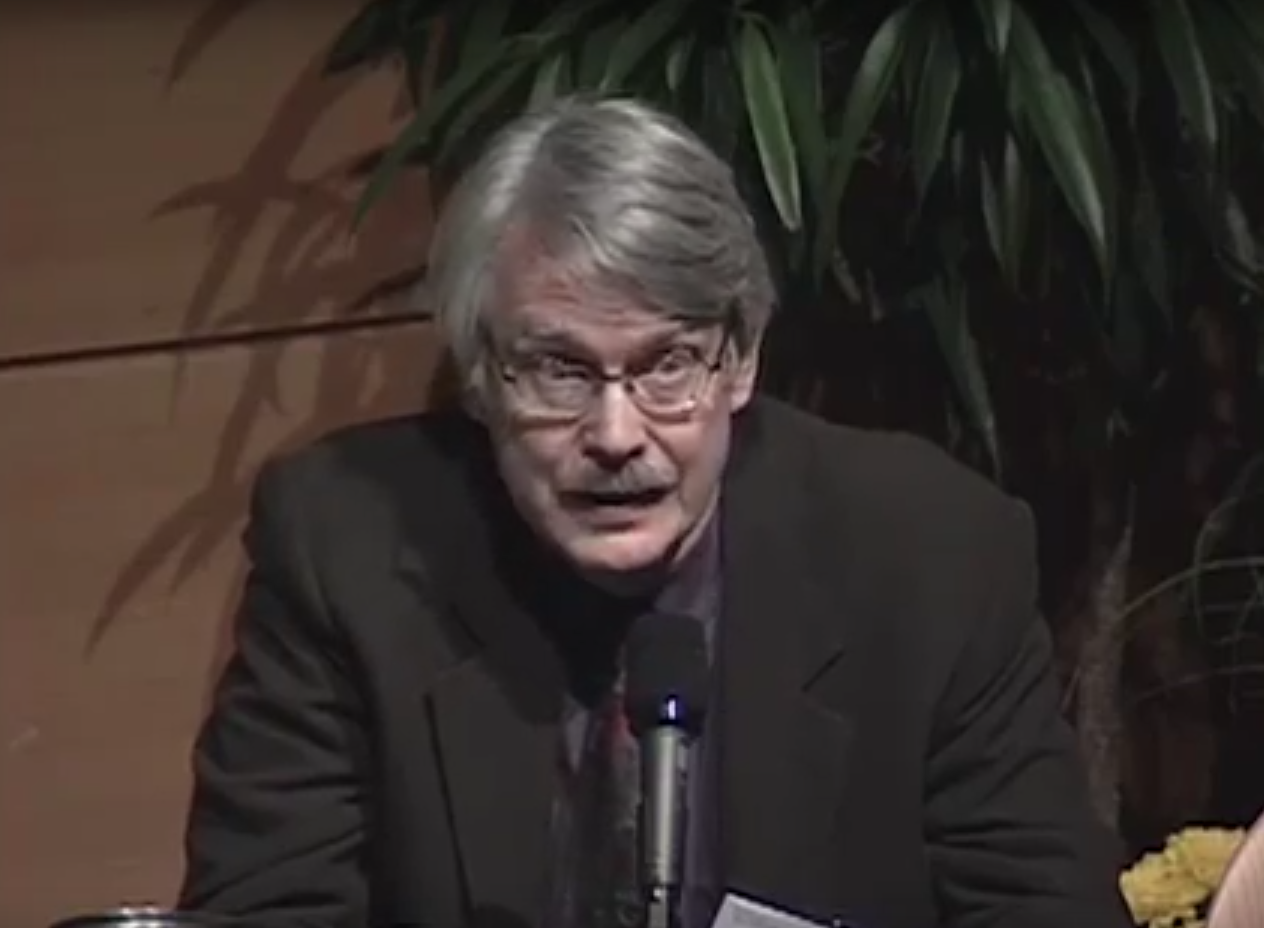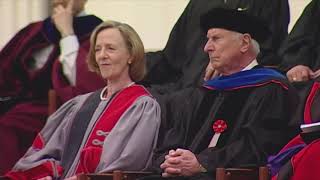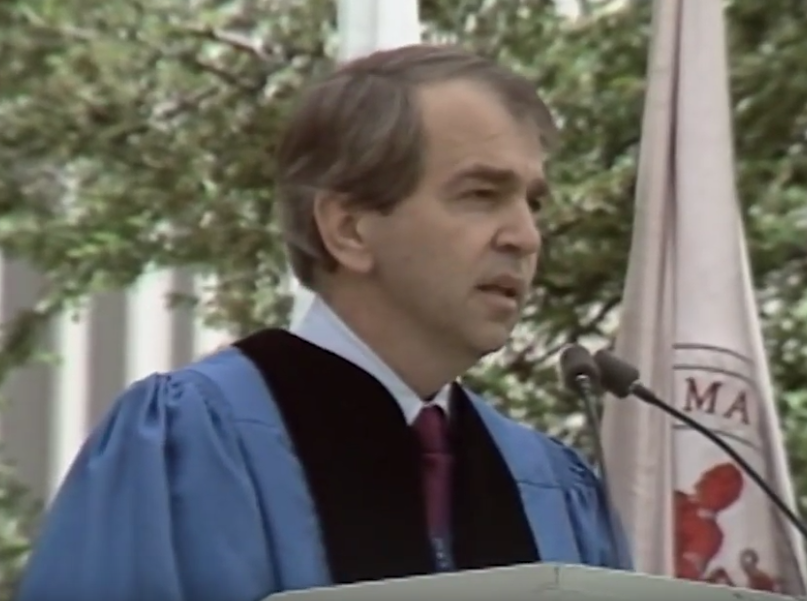Vice President Al Gore - 1996 MIT Commencement Address
PRESENTER: Ladies and gentlemen, the Vice President of the United States will now deliver the commencement address.
[APPLAUSE]
GORE: Thank you. Dr. Gray, President Vest, members of the MIT board and faculty, parents and families, Mayor Sheila Russell, alumni and alumnae, students, and especially graduating seniors--
[CHEERS]
--thank you for inviting me this morning. It is truly an honor to be MIT's commencement speaker and a pleasure to return to this city, where I myself graduated 27 years ago from a school just up the river. That school, Harvard, and MIT have had a long and sometimes tumultuous relationship.
In the early days in the 1860s, Harvard tried to absorb MIT. But this school's founder and very first president, William Barton Rogers, fought back. He was adamant that an institution devoted to fostering scientific knowledge and a liberal education must remain independent.
Many things have changed since those days. For example, tuition for first-year students in 1866 was $100. President Barton, incidentally, literally gave his life for this institution. When he returned after his retirement to deliver the commencement speech in 1882, right in the middle of his speech, he died. As a result, I have the rare comfort of knowing that whatever your reaction today, I will not be remembered as the stiffest speaker in your school's history.
[LAUGHTER]
[APPLAUSE]
I am fully prepared, however, to be remembered as the second stiffest.
[LAUGHTER]
In preparing for this speech, I engaged in a dialogue with the graduating class by way of the internet and your university's computer network, the Athena system. More than 100 of you responded in some detail, and I thank you very much. For those of you who didn't respond, I know who you are.
[LAUGHTER]
I read every response thoroughly on the worldwide web, and I learned a great deal. Among other things, several of you emphasize the fact that MIT not only educates scientists and engineers, but also architects, linguists, designers, economists, even poets. Even poets.
[LAUGHTER]
[CHEERS]
[LAUGHTER]
A small but hardy band. Nevertheless, because this is MIT, I would like to share some thoughts today about the relationship between science and technology, on the one hand, and humankind and society, on the other. When Winston Churchill spoke here in 1949, he spoke about the relationship of science and society.
Ten years later, in a celebrated lecture in England, scientist and writer CP Snow introduced the concept of the two cultures. In his subsequent book entitled Two Cultures, he wrote that the culture of science and the culture of society's literary arts had almost ceased to communicate at all. He noted that the popular culture in England and America spoke the same cultural language, but both, in his words, had about as much communication with MIT as though the scientists spoke nothing but Tibetan.
Why is there such a gulf between science and society? The schism between science and the rest of society, which began at least as early as Galileo's trial in 1633 and continued with the trial of John Scopes in my home state in 1925, has not narrowed since the publication of Snow's famous book.
Indeed, 18 months ago, Sheila Tobias examined this schism and concluded that it has grown worse. Science illiteracy, she said, has entered a second, more pernicious stage, fueling widespread opposition to science. She noted that physicist and science historian Gerald Holton has written that, quote, "This new opposition to science threatens to topple the Enlightenment-based tradition on which scientific discourse and democratic politics are based-- two cultures, separated by a great divide.
One of the consequences of the widening of this divide is that the metaphors of science are no longer migrating into our popular culture at the rate they once did. In the early decades of the scientific revolution during the 17th century, there was an explosion of new metaphors that crossed the permeable boundary between science and culture. It was more common in that era for individuals to be fully conversant in both science and the rest of culture. There was less to master before the scientific revolution speeded up. John Stuart Mill was once described as the last man to know everything.
In that age, people generally acquired an intuitive sense of Newtonian physics, spoke of the universe as an apparatus that ran like clockwork, spoke of social organizations resembling machines. Later on, Charles Darwin's theory of natural selection supplied metaphors for competition in economics and life, and still later supplied the language for a social movement that misused his theory and borrowed his name.
But now, in the second half of the 20th century, while the number of new discoveries flowing out of the still accelerating scientific revolution is at least a thousandfold greater, the flow of these metaphors into the rest of society has slowed to a trickle.
I believe it is time for a new effort to build bridges between these two cultures. I agree with my late friend Jerry Wiesner, who said in his inaugural address as president of MIT in 1971, "It is our responsibility to understand what our learning and discoveries may do to man and society and to transmit that knowledge to new generations, to leaders who may be wiser than we in applying it or wiser in judging how slowly or rapidly these technologies may be absorbed."
I'm convinced that a more robust discourse between science and society could empower us to fruitfully apply some powerful new metaphors from science in an effort to better understand society and the relationship between society and science.
Let me illustrate what I mean with an example. I have a friend who's an MIT graduate named Danny Hillis. A few years ago, he patiently explained to me the workings of a massively parallel supercomputer by pointing out that the first computers relied on a central processing unit surrounded by a field of memory. To find the answer to a particular problem, the CPU would send out to the field of memory to retrieve data, then bring it back to the center for processing. The result would then be placed back in the memory-- three trips back and forth, consuming precious time and generating unwanted heat.
The architectural breakthrough associated with massive parallelism was to break up the power of the CPU and distribute it through the field of memory in the form of smaller, separate processors, each co-located with the memory it processes. When a task has to be performed, all of the processors begin to work simultaneously and process a small quantity of information, and then the separate parts of the answer are all brought simultaneously to the center, where they are assembled-- one trip, less time and heat.
When you think about it, the metaphor of massive parallelism, or distributed intelligence, offers a nice explanation for why our representative democracy is superior to a governmental system run by a dictator or a king. Where totalitarian regimes rely on a central processor to dictate all commands, representative democracies depend on the power and insight of people spread throughout the society, each located adjacent to the part of society in which he or she is most interested.
Or take capitalism-- the Soviet Union's economy collapsed because it relied on a central processor to make all economic decisions. It didn't work very well. Innovation withered, and corruption took root. The North Korean economy continues to rely on a central processor, and today its people are starving.
But capitalistic economies distribute the power to those located outside the center, entrepreneurs and consumers who make their own decisions independent of one another. And those accumulated decisions create a stable system that marries supply and demand and keeps prices stable.
To take a third example, many of the latest techniques from the world of management, as graduates of the Sloan School know very well--
[CHEERS]
Did I use a buzz word?
[LAUGHTER]
Many of the latest techniques from the world of management rely on the same principles of distributed intelligence, even if they don't call it that. By distributing intelligence and information and responsibility to workers on the front lines, organizations are transforming themselves, serving customers better and producing greater value.
Each of these examples relies for its success on the same basic architecture. Instead of insisting that all decisions be made in a single place, the power is widely distributed throughout the organization. Each individual's portion of the answer is then assembled as part of a collective conclusion. In capitalism, it's supply and demand. In representative democracy, it's self-determination. And in each case, it is essential that all the individuals involved share some basic characteristics-- for example, the freedom to obtain information that flows unimpeded throughout the system.
In organizations that are based on this design, it is crucial that all the individuals who are part of the organization feel a sense of cohesion that is based on a common understanding of the organization's guiding vision. It is crucial they all understand the basic goals and that they all share the same basic values upon which a decision can be based, whether made by the CEO or a clerk behind the word processor.
Some organizations find this cohesion deceptively easy to establish, simply because they're new, and everyone involved has been present at the creation and is eager to accomplish goals easily kept in mind until the initial burst of enthusiasm wanes. For example, NASA put a man on the moon and returned him safely in less than 10 years. It was an inspiring sprint. But once that goal was achieved, the organization's culture began to quickly erode and has had to be recently painstakingly rebuilt.
Likewise, some of the institutions of government created in the burst of enthusiasm called the New Deal were remarkably successful until the first generation of managers passed from the scene, and then we began to see bureaucratic rigor mortis set in.
The challenge for any organization is not simply to establish these conditions and gain the advantages of distributed intelligence, but to nurture and sustain this creative state. There's no better example of how to do that than the US Constitution, with its checks and balances and careful design intended to sustain the creativity of self-government after more than 200 years. Our constitution is, in a sense, the software guiding the operations of a massively parallel system for processing political decisions.
Our founders rejected the idea of a pure democracy, not, as some suppose now, because the information technologies of the 18th century simply could not accommodate a plebiscite on every question. Rather, as the Federalist Papers make clear, they insisted upon the importance of a reflective process with an intermediate institution placed between the people and the exercise of power, an institution capable of reasoned debate and deliberation, which would cool passions and distill judgment and look beyond the present moment to the future consequences of the decisions made.
Many people feel that valuable processes like these in our society are now threatened by the still accelerating scientific revolution. They wonder in this case, for example about the impact of television and 30-second commercials on our ability to be deliberative and reflective in our political decisions as a nation. Passionate beliefs held by a temporary majority when powered by the extra force of new technology, may not be cooled or slowed down at all by the institutions of our self-government.
This concern that science and technology now regularly unleash forces that threaten to seriously damage some delicate balances important to the fabric of society is one of the principal issues our society must resolve in order to establish a healthier relationship between the two cultures.
Until recently, this dialogue was difficult to even begin because of a philosophical preference in the scientific method for narrow specialization, which often resulted in the splitting of large questions into smaller and smaller component parts, each of which was then analyzed by expert specialists independently of those studying the other component parts. Not only was communication difficult between scientists and generalists, it was difficult between specialists in one field and specialists in another field.
The often frustrating result was a tendency to ignore important relationships between the different parts that make up the whole. As Goethe said in anger and frustration, "How often do they strive to divide that which, despite everything, would always remain single and whole."
In more recent decades, there has been a new appreciation within science for the study of whole systems. Here at MIT in the early 1960s, for example, the System Dynamics Group was founded by Jay Forrester, a professor of electrical engineering. The new emphasis on systems creates new possibilities for a fruitful dialogue between the two cultures.
For example, both cultures can describe how the invention of nuclear weapons radically transformed the age-old habit of war. The destructive consequences of all-out war between superpowers became unthinkable, and a Cold War emerged in its place.
In the same way, a large cluster of new technologies that have enhanced our capacity to exploit the Earth for sustenance has radically transformed the relationship between humankind and the global environment. For example, the air we are breathing right now in this great court contains six times as many chlorine atoms in each lungful than it did when these buildings were constructed. The same is true of the air at the North Pole and the South Pole, the Equator, and everywhere on Earth.
The concentration of chlorine in the entire atmosphere has increased sixfold in only a few decades because of a single family of new chemicals invented in the 1930s and used in large quantities only since World War II-- chlorofluorocarbons. There are no direct health consequences of breathing six times as many chlorine atoms, but the impact on the Earth's environment is quite harmful. The hole in the stratospheric ozone layer and the increased irradiation of the surface by ultraviolet rays is, of course, a direct consequence of this new technology.
Similarly, the burning of fossil fuels by 5 and 1/2 billion people and the destruction of forest land at an unprecedented rate worldwide is now leading to the rapid accumulation of carbon dioxide and other greenhouse gases in the Earth's atmosphere. The resulting global climate change is leading to increasing global temperatures, threatening the disruption of the climate balance we're used to that has remained relatively stable for thousands of years.
It is also causing the rise of sea level at 6 millimeters per year, the retreat of nearly every mountain glacier in the world, the rapid disintegration of some important ice shelves in Antarctica, and the disruption of important ecosystems upon which much of the diversity of life on Earth depends.
A third potentially destabilizing set of new technologies is what is commonly called genetic engineering. One graduating MIT senior wrote to me in email that recombinant DNA technology represents, quote, "a powerful tool for countless therapies. However, it could also be very harmful in the wrong hands."
In all these examples, there is a clear sense that what is needed, and what is at risk, is balance. The new capacities conferred by new discoveries in science and technology clearly have a promising potential for good and beneficial effects, but simultaneously provoke widespread and deep concern that the use of these new powers can be disruptive and harmful.
Another graduating senior in your class expressed his concerns in these words, quote, "I believe that technology in any form is a new power that can potentially disrupt society. With the current pace of advances, our society is undergoing a destabilizing revolution constantly. Maintaining the delicate balance that we have achieved between individual liberty and societal needs requires diligence and a watchful eye. Failure to do this will lead to either chaos-- Lord of the Flies-- or tyranny-- 1984," end quote.
How can we create a richer and more productive dialogue about these possibilities that is accessible to men and women who inhabit both of the two cultures? Let me suggest a second metaphor that is based on a new discovery in science, one which I believe has explanatory power directly relevant to the society's need for a discussion of this problem.
Complexity theory is a new science useful for describing what are called non-linear systems that exist at the edge of chaos. By that definition, our society certainly qualifies as a complex system.
Here is how the author Mitchell Waldrop describes the phenomenon: "Complex systems have somehow acquired the ability to bring order and chaos into a special kind of balance. This balance point, the edge of chaos, is where the components never quite lock into place, and yet never dissolve into turbulence either. The edge of chaos is where life has enough stability to sustain itself and enough creativity to deserve the name of life. The edge of chaos is where centuries of slavery and segregation suddenly give way to the civil rights movement of the 1950s and '60s, where 70 years of Soviet communism suddenly give way to political turmoil and ferment. The edge of chaos is the constantly shifting battle zone between stagnation and anarchy, the one place where a complex system can be spontaneous, adaptive, and alive."
There are a number of societies in our modern world which appear to be in a state of equilibrium and balance, but then move suddenly toward chaos or totalitarian stagnation. Consider, for example, Somalia. The clans which organized traditional Somali society often engaged in confrontation at the boundaries of their respective territories, in clashes which consisted largely of symbolic conflict with few casualties.
The introduction of automatic weapons in large numbers and then the mounting of machine guns on light pickup trucks-- a combination that became known as technicals-- tragically transformed the consequences of these once symbolic conflicts, and the entire system slipped out of equilibrium and into utter chaos.
To take a second tragic example, in Sarajevo, the stadium that was the centerpiece of the world's celebration of peaceful competition at the 1984 Winter Olympics became a cemetery a few short years later when that society slipped into chaos.
In the 1930s, of course, fragile democracies in Germany and Italy moved not toward anarchy and chaos, but toward totalitarianism, with horrific consequences for much of the world.
The challenge for modern societies, including our own, is of course to avoid either extreme-- either chaos or stagnation-- by maintaining the essential balance between stability and creativity. And part of the challenge is how to integrate the changes that flow out of new technologies and new scientific knowledge, how to integrate the new powers and enhanced capabilities and use them as a source of energy for adaptive change that benefits society as a whole.
There is a model for understanding how such change occurs that I have found helpful. 19 years ago as a freshman Congressman, I met a scientist named Ilya Prigogine, who had just won the Nobel Prize for chemistry for describing how systems can adapt to sudden and dramatic change.
He described the characteristics of what are called open systems, meaning systems where energy or matter or both can flow in and through and out. When the flow of energy in such a system suddenly and dramatically increases, the system responds in a two-step process. First, it breaks down. Second, it reorganizes at a higher degree of complexity.
Societies can behave the same way. When there is a sudden and dramatic increase in the flow of energy through the society-- automobiles in place of horses and buggies, massive waves of immigration, new trading relationships with new flows of products, surges of new information with the introduction of technologies like television or the internet. First, long-stable patterns break down. Then new ones emerge at a higher degree of complexity.
Societies are vulnerable to misinterpreting the first stage as a descent into chaos and then overreacting with the imposition of a rigid, stagnating order.
Gerald Holton wrote, "History has shown repeatedly that a disaffection with science and its view of the world can turn into far more sinister movements." So while we are right to raise questions about the challenges to our society posed by new technologies, as many of you did in your emails to me, we must strongly reject the neo-Luddite voices in our society, seen in their most extreme and repugnant form in the writings and actions of the Unabomber.
By contrast, the conditions that maximize a society's ability to integrate rapid change in a healthy pattern include the maintenance of the free flow of information' the maintenance of strong intermediate institutions, such as families, schools, places of worship, civic associations, and communities; and the avoidance of gross inequities. As one graduating senior put it, "I fear that technological advances, if done in the wrong way, will cut off the poor or anyone who doesn't have access to these changes." If individuals within a society are left behind when others gain new powers and capacities, they can lose their attachment to the society, begin to feel powerless, and then define their relationship to the whole in terms of anger and alienation.
For four years, President Clinton and I have been working to ensure that as we enter this new age, our nation addresses the challenge of maintaining a free flow of information, avoiding gross inequities in the access to such knowledge, and in sustaining the private institutions that promote dissemination of this learning. Just last week, the president announced a new plan to put two years of college in the grasp of all Americans, young and old, with a refundable tax credit to make tuition free at most community colleges.
We have also proposed new tax deductions for educational costs, lessened the cost of student loans, and promoted an ambitious plan to have every classroom and library in America connected to the information superhighway by the year 2000.
New information technologies have a special power to engender dramatic change in society. The invention of print technology in the 15th century distributed large quantities of civic information, thereby creating the conditions which made possible the nation-state and eventually representative democracy.
In our day, the new technologies of radio and television broadcasting have dramatically increased the flow of information everywhere in the world. In Tienanmen Square, fax machines and CNN were seen by Chinese authorities as deadly threats to civic order. The Ayatollah Khomeini spread his revolution inside Iran with audio cassette tapes and telephone lines. The internet will soon distribute a million times the information now accessible in print to billions of people on every continent.
As another member of the graduating class said, "Each of us may speak with equal voice and be easily heard by any who choose to listen. The powerful or rich no longer have the monopoly on mass communications."
Along with the internet, the most important new tool we now have to extend our ability to create new personal paradigms of understanding is the computer. They can magnify our ability to cope with the information explosion in important ways. They can sift through vast quantities of data, searching for the needles in the haystacks that are directly relevant to the questions of interest to us. They can form these data into patterns that are far more accessible to our brains than endless bits of information strung together sequentially. They can artificially alter the scale and speed of the world to make images too large or too small for our comprehension, just the right size for us to understand. Processes that are extremely slow can be speeded up for our inspection, and processes that occur naturally at the blink of an eye can be slowed down for our convenient analysis.
And finally, the largest and most powerful of these machines have led to the emergence of a completely new form of knowledge creation. In addition to inductive reasoning and deductive reasoning, we now have a new variety that blends aspects of the first two. Computational science can create artificial realities within which experiments can be conducted.
How will society adapt to the dramatic changes that accompany this new revolution? The reemergence in our world of rigid, stultifying, fundamentalist ideologies can be seen as one extreme in reaction to the vast increase in data now washing through world civilization.
At the opposite extreme, the fear of chaos was expressed by another MIT graduate on the Athena system-- quote, "Free speech uncontrolled can break down our social norms and common beliefs, allowing extreme opinions to find and strengthen each other or allowing unsubstantiated, unfounded truths to be disseminated without challenge or resistance."
Hers is a concern I partly share. For example, I believe we have an obligation to assist parents who want to exercise responsibility for protecting young children from materials they as parents believe their children are not ready for. But let me also state my clear and unequivocal view that a fear of chaos cannot justify unwarranted censorship of free speech, whether that speech occurs in newspapers, on the broadcast airwaves, or over the internet.
[APPLAUSE]
Our best reaction to the speech we loathe is to speak out, to reject, to respond, even with emotion and fervor. But to censor, no. That has not been our way for 200 years and must not become our way now.
The great historian of science Thomas Kuhn described the way in which our understanding of the world properly evolves when faced with such a sudden increase in the amount of information. More precisely, he showed how well-established theories collapse under the weight of new facts and observations which cannot be explained and then accumulate to the point where the once useful theory is clearly obsolete.
As new facts continue to accumulate, a new threshold is reached at which a new pattern is suddenly perceptible and a new theory explaining this pattern emerges. It is an important process, not only at the societal level, but for each of us as individuals as we try to make sense of the growing mountain of information placed at our disposal.
But the breakthroughs in understanding that we need in order to adapt to change, while they may be facilitated by the new capabilities that computers and the internet make possible, will not be caused by computers and will not take place inside them. These understandings will only take place in our lives. They will only have meaning in relation to human values.
How many of you have ever tried to see the hidden three-dimensional image in modern computer-generated pictures called, according to one brand name, the Magic Eye? Has anyone looked at those pictures?
For those of you who have not seen them, they consist of complex patterns that seem like busy, partly incoherent designs intended to be viewed in a special way. My children taught me the technique. You hold them close to your eye and focus on a distant point beyond the plane of the image and then you wait patiently until your brain has processed the information in the image, which then reveals a three-dimensional picture that comes into sharper focus when you slowly move away from the image.
The most important breakthroughs and advances in understanding can only come when we take the time to look beyond the surface of the problems we face and focus on what is most important in our lives. The noise level in our civilization is rising. The flood of information on every subject makes the task of understanding change more difficult than ever. The temptation to rely on new technologies as a substitute for reflective thought is a dangerous trap.
If you are seeking a deeper understanding of what your life is all about, you will not find that meaning on the surface of your life. You must look beyond and through your life and focus on a distant point and be patient.
Nor can you understand your life in isolation from its context-- your family, community, your nation, your world, and the fabric of existence of which you are a part.
If you are seeking healing in your life, healing is to be found in these relationships.
If you are seeking spiritual meaning in your life, you will not find it by thinking of what you want to do next, but rather by reflecting on the entirety of your life in its largest context.
If you are pursuing happiness, it will not be found in a set of nostrums, nor in the undisciplined pursuit of pleasures, but is more likely to be found by living your life with enough stability to faithfully discharge your responsibilities to others and with enough spontaneity to adapt continually to the new challenges you will encounter and to seize the new opportunities inherent in a creative and balanced life.
That is what I wish for you. God bless you, and good luck.
[APPLAUSE]
